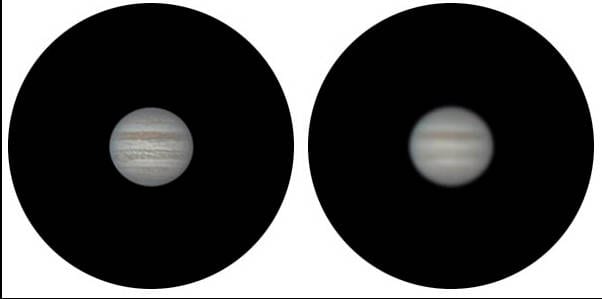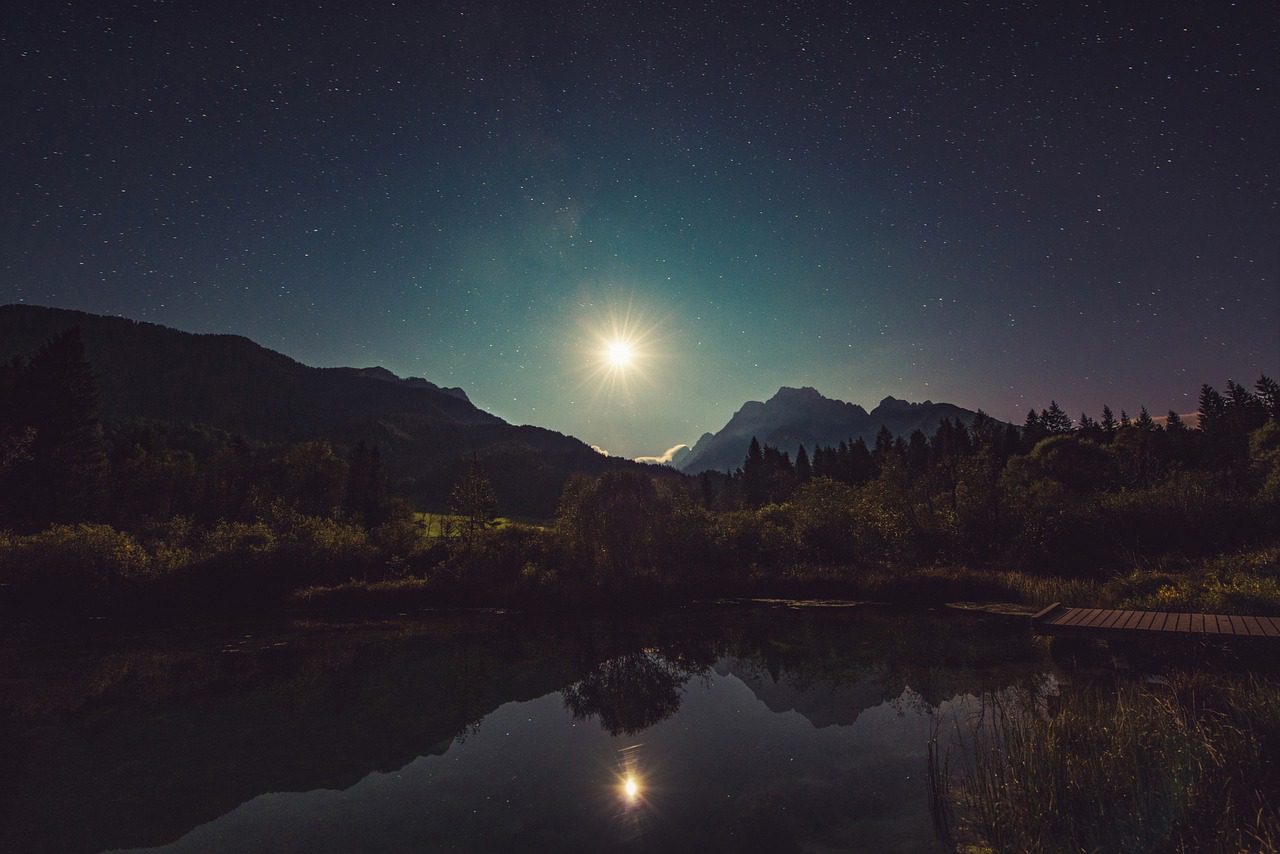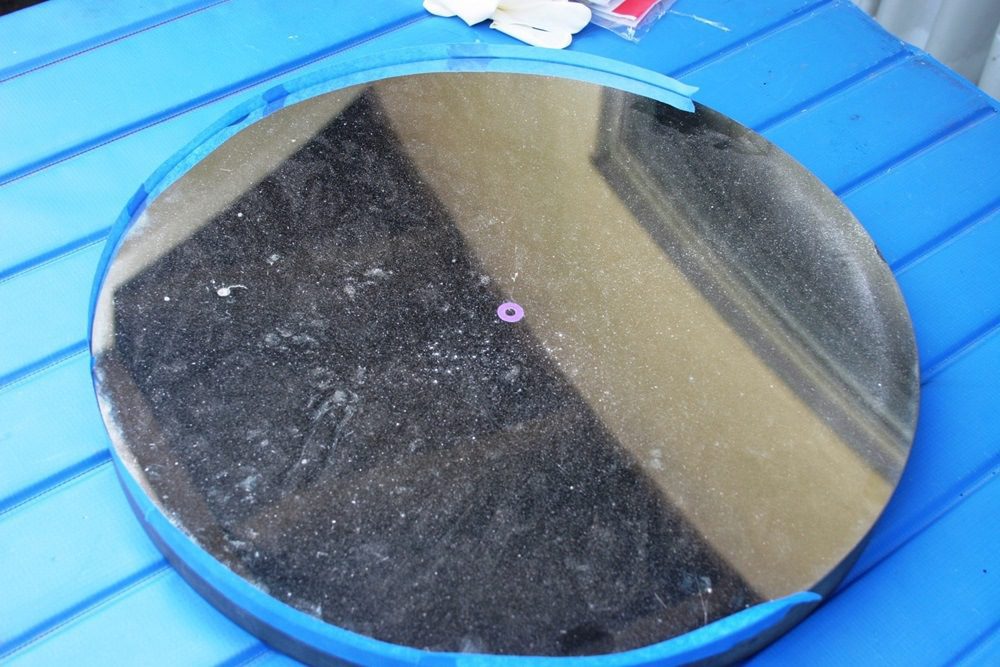While it’s easy to obtain crystal clear images of distant objects with a telescope, many people struggle to achieve that. Both beginners and experienced users of a telescope can experience a few challenges when trying to focus.
One of the most common challenges experienced by many telescope users is seeing blurred images. Your telescope can appear blurry due to several reasons, including :
- too high magnification and
- environmental factors.
If you are struggling with this issue, you don’t have to worry as you can easily fix it.
Continue reading to discover the various possible causes of this problem and how you can troubleshoot them.
Contents
Causes of Blurry Images in a Telescope and How to Solve Them
While there is no single cause of a blurry telescope, the quality of the image can be affected by various factors. They include:

1. Too High Magnification
Too high a magnification is the leading cause of most telescope images being too blurry to be classified accurately.
Any magnification above 200X may make images unclear in certain atmospheric conditions. The magnification on a humid summer night will not be the same as during a winter night.
A very high magnification exaggerates the appearance of objects. For instance;
You may be observing the moon from your window glass, and things will be fine. If you try to increase the magnification to see distant objects, the images will appear distorted.
The primary use of the telescope is to focus on distant objects like the moon and comets. If you try to observe objects that are near, as the landscape with high magnification, you will see blurred images.
Luckily, it’s easy to solve this problem. To avoid blurred images caused by high magnification, always start with a low magnification eyepiece and gradually increase it.
In simple terms, always start with the big eyepiece and go as you add smaller eyepieces. You can start with a 20mm to 25mm and see if it works fine.
You should also ensure there are no extension tubes or Barlow’s in place.

2. Environmental Factors
The quality of images observed in the telescope is mostly affected by environmental factors.
The most common environmental factors known to cause blurred vision in telescopes include temperature and turbulence, warm ground, and moonlight.
· Temperature and Turbulence
Temperatures change, and turbulence in the atmosphere makes astronomical objects look as if they twinkle and blurry. These two conditions also reduce the distance in which the telescope can focus, and stars appear blurry.
The temperature variation and turbulence conditions can be in the high atmosphere or even in the telescope itself.
A seeing disk is also called the angular diameter of a star’s image. This is the region in which a star looks like it moves when light travels for a long distance from space to the telescope.
This seeing disk is tiny up to 0.25 arcsec and one arcsec at best. In bad weather conditions, a disk of up to 4 arcsec is the best for focusing clearly on the stars.
The bad seeing condition arising from both the telescope and the surroundings is referred to as tube currents.
You can curb tube currents by making telescope observations in an air-conditioned environment to make observations at the same temperature during the day and night.
Maintaining the temperatures in the telescope and the surrounding at equilibrium can also help in managing tube currents.
· Warm Ground (Hot Asphalt)
Another environmental cause of bad seeing is warm ground like hot asphalt in front of the telescope. You can minimize this problem by making observations in areas with fewer roads and developments.
The best way to deal with all bad seeing conditions is to make observations in elevated areas like hills and mountains. This is because the atmosphere is thinner in high places, which is why the biggest space observation centers are located in elevated areas like mountain peaks.

· Moonlight
Another common cause of blurry vision through the telescope is making observations during the full moon.
The full moon fills the whole sky with light. This light occupies many pixels of the telescope, which makes objects appear blurry or even invisible. Besides, making observations in light-polluted cities can also cause the same effect.
You can schedule your telescope for maintenance in the days around the full moon.
3. Collimation is Out
Blurry vision caused by collimation misalignment is a common problem more significantly in the Cassegrain and reflector telescopes.
The collimation problem is easy to fix, but it can be challenging if it’s the first time you are dealing with it.
To deal with this problem, you should always assume that collimation is off before using your telescope. You can also check it from time to time.
How does Collimation Cause Blurriness
Collimation is the process of aligning all the components of the telescope to bring light into full focus. Whenever these components are not fully aligned, then the telescope is said to be out of collimation.
If the reflector telescope’s mirrors are not fully aligned, you are likely to get blurry images whenever you try to magnify a distant object.
The main reason is that by magnifying, you are exaggerating all the available misalignments.

How to Troubleshoot These Problems
Remove the eyepiece and look into the telescope. You will probably find nothing other than your own eyes looking at you.
Use your collimation tools to check and fix any collimation, if any. Collimation tools are easy to use, even for beginners. But if you encounter problems, you can refer to the user manual to handle them with more ease.
4. The Main Telescope is Not Aligned with Finderscope
This problem occurs when the telescope inverts your image and the difference between the main telescope and the Finderscope’s magnification.
You can recognize that this is the cause of your problem if you can focus on large and bright images like the moon, but distant objects appear blurry.
How to Fix this Problem
Try to align your Finderscope and main telescope during the day by focusing on a distant object and adjusting everything to its desired position.
5. Telescope effects
Sometimes image quality can be affected by factors arising from the telescope features, properties, noise, and optics imperfections.
· What is Blooming
The leading cause of blooming is when the telescope is exposed for long until the pixel fills up.
Whenever this happens, the extra charge from the filled pixels spills to adjacent pixels in columns. It makes the image to be overexposed, causing blurry vision.
· What is the Trap effect
A trap is an effect that appears like a dark line caused by pixels on the telescope that exhibit irregular behavior.
These pixels tend to hold some electrons before allowing the rest of the electrons to pass through them.
If you are using a telescope with this effect, you should observe the objects for a longer time. Objects observed for a short time will not be clear.

· What is Dust Rings effect
If there is dust in any of the corrective optics in your telescope, then images will never be clear. This is because this dust will block much light; thus, you cannot focus on the images.
If you see blurry images with objects that appear like rings, you should consult astronomers who will measure where the dust is and then use calibration frames to remove it altogether.
Related article
How To Clean Refractor Telescope – TIPS&TRICKS
· What is Diffraction
Sometimes the images may not be clear due to diffraction properties in the telescope caused by frames supporting the secondary mirror.
The shape and orientation of these supporting frames will differ in different telescopes.
If you have dealt with all the issues above, your images should be real and clear.
In case that you are still experiencing blurry image problems, you can check a few things, after which your telescope will work fine.
Assuming that you are wearing spectacles and glasses, you can remove them to see any differences in viewing images without glasses.
Ensure there are no obstacles in your way. The presence of obstacles like trees, buildings, or even satellites may block your view.
Before concluding that there is something wrong with your view and telescope, ensure both the main telescope and the finderscope are free of any obstacles.
Telescope Troubleshooting: Fast Tips For Quick Fix
Tip 1: Check collimation
Tip 2: Check the magnification
Tip 3: Check a Barlow tube. A Barlow or extension tube could increase the depth of field so that you can get to infinity focus.
Tip 4: Check diagonal. Make sure that the diagonal is installed correctly in the telescope.
Tip 5: Check correct alignment for Finder Scope.
How to focus a telescope for astrophotography
I have written several articles on how to focus a telescope. Here they are, so I hope they help.
- PRIME FOCUS METHOD And The Chuck Norris Effect
- What Is PIGGYBACK In Astrophotography
- Everything About Afocal Lunar Photography Method
- Easy Method With a Fixed Tripod
- How to Properly Collimate Your Telescope and Avoid Cloudy View
- How To Polar Align A Telescope During The Day: Step-By-Step Instructions
- How To Focus A Telescope In 5 Easy-To-Follow Steps
Conclusion
After doing all this, everything should be fine. If you are unlucky yet, it is advisable to wait and observe during the day when everything is clear.
Anything beyond that, you should only consult your technician and other telescope specialists for further diagnosis.


